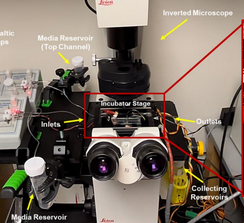
Research Overview
This undergraduate thesis work focused on developing innovative bone regeneration scaffolds that incorporate salicylic acid (SA) for controlled drug delivery. The research was conducted at Rutgers University and resulted in a published paper in the Journal of Biomedical Materials Research Part A.
Project Background
Bone regeneration is a critical challenge in biomedical engineering, particularly for patients with bone defects, fractures, or degenerative bone diseases. Traditional bone grafts have limitations including donor site morbidity, limited availability, and potential for disease transmission. Tissue engineering approaches using biodegradable scaffolds offer a promising alternative, especially when combined with controlled drug delivery systems.
Salicylic acid (SA) was chosen as the therapeutic agent due to its well-established anti-inflammatory and bone-promoting properties. The challenge was to create a scaffold system that could provide both structural support for bone regeneration and controlled release of SA over an extended period.
Technical Approach
The research involved several key technical innovations:
Scaffold Design
- Interconnected Porosity: Designed scaffolds with controlled pore size and interconnectivity to facilitate cell infiltration, nutrient diffusion, and vascularization
- Biodegradable Materials: Utilized biocompatible polymers that degrade at rates compatible with bone regeneration
- Mechanical Properties: Engineered scaffolds to match the mechanical properties of natural bone tissue
Drug Delivery System
- Local Release: Incorporated SA directly into the scaffold matrix for site-specific delivery
- Sustained Release: Designed release kinetics to maintain therapeutic SA levels over weeks to months
- Controlled Degradation: Synchronized scaffold degradation with drug release profiles
Fabrication Methods
- Microfluidics: Employed microfluidic techniques for precise control over scaffold architecture
- 3D Printing: Utilized additive manufacturing for complex geometric designs
- Phase Separation: Applied solvent-based phase separation for pore formation
Research Outcomes
The project successfully demonstrated:
- Controlled Drug Release: Achieved sustained SA release over 28 days with minimal burst release
- Enhanced Bone Formation: SA-eluting scaffolds showed improved osteogenic activity compared to control scaffolds
- Biocompatibility: Scaffolds supported cell adhesion, proliferation, and differentiation without cytotoxicity
- Mechanical Stability: Maintained structural integrity throughout the degradation period
Publication
This research was published in the Journal of Biomedical Materials Research Part A:
"Salicylic acid (SA)‐eluting bone regeneration scaffolds with interconnected porosity and local and sustained SA release"
Published in 2016, this work represents a significant contribution to the field of bone tissue engineering and controlled drug delivery systems.
Impact and Significance
This undergraduate research project laid the foundation for understanding the complex interactions between scaffold design, drug delivery kinetics, and bone regeneration. The findings have implications for:
- Clinical Applications: Potential use in bone defect repair, spinal fusion, and orthopedic surgeries
- Drug Delivery Systems: Framework for developing other controlled-release tissue engineering constructs
- Material Science: Insights into polymer-drug interactions and degradation mechanisms
- Regenerative Medicine: Advancement of tissue engineering strategies for bone regeneration
Technical Skills Developed
This project provided hands-on experience with:
- Biomaterials: Polymer synthesis, characterization, and processing
- Drug Delivery: Controlled release systems and pharmacokinetics
- Tissue Engineering: Scaffold design and cell culture techniques
- Analytical Methods: HPLC, mechanical testing, and microscopy
- Research Methodology: Experimental design, data analysis, and scientific writing
